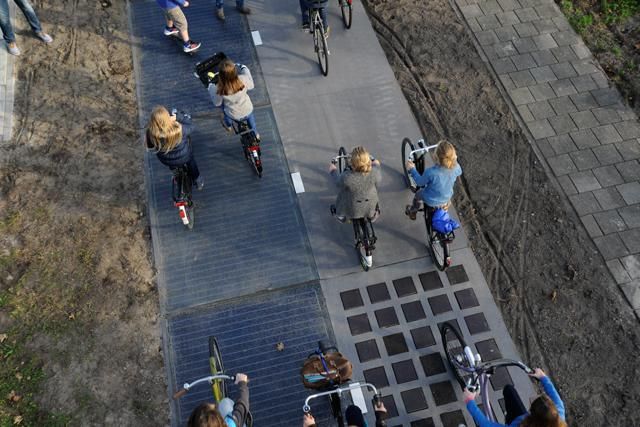Solar road working ‘better than expected’
The world’s first solar road is generating more electricity than expected six months after being launched, according to Dutch engineers

The world’s first solar road is generating more electricity than expected six months after being launched, according to Dutch engineers.
The 70-metre track along a bike path connecting the northwest Amsterdam suburbs of Krommenie and Wormerveer became the world’s first public road with embedded solar panels in November last year.
After the first six months of a three-year pilot, engineers have announced that the road has produced more than 3,000kwh of electricity – enough to an average household for one year.
Sten de Wit, spokesman for the SolaRoad project, said: “We did not expect a yield as high as this so quickly…If we translate this to an annual yield, we expect more than the 70kwh per square meter per year. We predicted [this] as an upper limit in the laboratory stage. We can therefore conclude that it was a successful first half year.”
The road has rows of crystalline silicon solar cells, embedded in concrete and is overlaid with a translucent layer of tempered, skid-resistant glass.
The surface layer is also dirt-repellent to maximise exposure to sunlight.
The solar cells are connected to smart metres, which optimise their output and transfer the electricity to street lighting or the energy grid.
Engineers estimate the test road could produce enough energy to power three households and there are plans to extended the solar road to 100 metres by 2016.
Approximately 150,000 cyclists have been over the road in the first six months and companies working on the project are looking to develop solar panels that could support buses and larger vehicles.
The Solar Roadways project in the United States, aimed at introducing similar solar powered roads, has raised more than $2.2 million through a fundraising campaign on IndieGoGo last year and is now in research and development phase.
The three year project is estimated to cost approximately €3.5 million.
Temperature fluctuations caused the surface of the protective glass to start peeling off earlier this year with maintenance work needed and improvements to the top layer have apparently rectified the issue.






